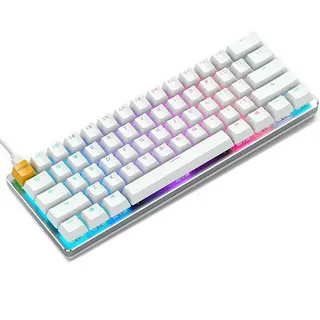If you are new to computer keyboards or planning to buy one, understanding the different keyboard layouts can be quite helpful. One popular option is the full size keyboard layout. In this article, we will break down what a full size keyboard layout is, its components, and why it might be the right choice for you.
What is a Full Size Keyboard Layout?
A full size keyboard layout refers to a keyboard that includes all the standard keys found on a traditional desktop keyboard. Unlike smaller or compact keyboards, a full size keyboard typically has 104 keys (or more), which include:
- Alphanumeric keys (letters and numbers)
- Function keys (F1 to F12)
- Navigation keys (arrow keys, Home, End, Page Up, Page Down)
- A numeric keypad (numpad)
- Modifier keys (Shift, Ctrl, Alt, Windows key)
This layout mirrors the familiar setup found on most office and home computers, making it highly versatile and easy to use for beginners and experienced users alike.
Components of a Full Size Keyboard Layout
Understanding the components helps you make the most of your keyboard:
1. Alphanumeric Section
This is the main part of the keyboard where you type letters, numbers, and symbols. It is arranged in the QWERTY format, which is the most widely used keyboard layout.
2. Function Keys
Located at the top row, these keys (F1 through F12) offer shortcuts for various commands like opening help menus or refreshing pages.
3. Navigation Cluster
This includes the arrow keys, Insert, Delete, Home, End, Page Up, and Page Down keys, which assist in moving around documents or webpages efficiently.
4. Numeric Keypad
The numeric keypad on the right side of the keyboard mimics a calculator, allowing for quick entry of numbers and mathematical operations. This is especially useful for data entry jobs or accounting.
Why Choose a Full Size Keyboard Layout?
For beginners, the full size keyboard layout explained clearly shows that it offers the most comprehensive and familiar setup. Here are some reasons to consider:
- Ease of Use: Having dedicated keys for everything means you don’t have to use complex key combinations.
- Productivity: The numeric keypad speeds up number entry and calculations.
- Ergonomics: Larger keyboards provide more spacing between keys, reducing typing errors and finger fatigue.
- Compatibility: Most software and shortcuts are designed with the full size keyboard in mind.
Conclusion
If you’re new to keyboards and want a reliable, feature-rich option, the full size keyboard layout is a great choice. By understanding the various sections and keys it includes, you can use your keyboard more effectively and boost your productivity. Now that you have the full size keyboard layout explained for beginners, you can confidently select the right keyboard to suit your needs.

